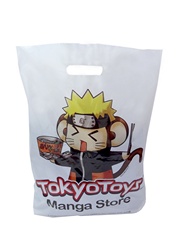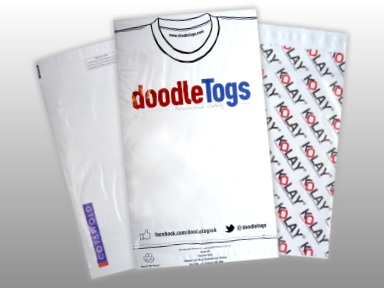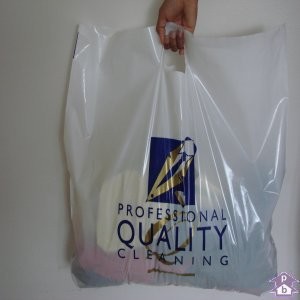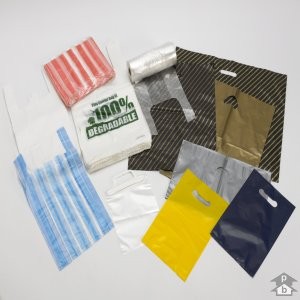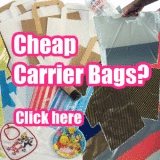About Us
Carrier Bags is a specialist website from Polybags Ltd, the UK's premier polythene packaging manufacturer, to highlight their printed carrier bag service, which provides personalised carrier bags at fantastic discount prices.
If you want carrier bags but don't need your design on them, then look no further than Polybags' extensive range of carrier bags available off-the-shelf.
Extra information about personalised carriers
Also for the safety of the animals, we use custom-built airline carriers to transport the chinchillas. Some other people use cat carriers, which transport with them, the risk of the chinchilla chewing out. Our custom carriers were manufactured with chinchillas in mind, have a wire grid frame, which ensures that your chinchilla will remain in their carrier until you determine to remove them.
Carriers can still charge additional
"As part of the agreement, each of the companies have agreed to provide base-level blocking for complimentary," Stein's spokesperson told us. But Stein's spokesperson has not answered a follow-up question in which we asked for a definition of "base-level blocking." The proper agreement between carriers and states not ever defines or even mentions "base-level blocking."
2) personalised season tickets shall be coded only on personalised E-Ticket Cards or other personalised carriers permitted by the ZTM in Lublin;
Hoesh International is one of the UK's leading supplier of Garment Covers, Wedding Boxes, Hat Boxes, Suit bags, and high quality Carrier Bags.
BRANDED CARRIER BAGS
We supply printed plastic bags , printed paper bags and a selection of material bags like our printed cotton bags , so you have a big selection to select from to come by the perfect bag for you. Some of our materials are 100% normal, while the rest are biodegradable, and a few are even ethically sourced so you can be sure that we are looking after you and the environment. For a tolerance of the normal carrier bag or to provide your clients with a bag for life to make your emblem last forever, we have all that you need and more with our brandedcarrier bags.
Custom Carrier Bags – London Paper Bags are specialist bag printers and suppliers to the Promotional and Retail sectours and we have a comprehensive selection of bags on offer from stock or custom manufactured to suit your requirements, printed with your design and delivered on time. Take a see at our spectrum of paper carrier bags and luxury paper bags, it comes with mat/gloss lamination, hot foil embossing, spot uv varnish or plain bags without any finishing.
Discount Carrier Bags
Here at Robins Packaging, we specialise in the supply of a wide spectrum of plain and printed carrier bags in a assortment of materials, styles, colours ...
Offering a gift means a lot to the people that deserve for it. Not all day, you plan for giving gifts to your optimal friends. Gifts can cater to necessary home purposes or used for rewards. Gifts contributions should be worth having and transport the proper intentions of the offerings. You can offer gifts which you can use for home or kitchen purposes. Printed carriers are the most necessary and useful for the home requirement. Offering this you can acquire a lot of due credit from your friends and well-wishers. Your friends can like and praise your selection of gift selection. Gifts can relate to promotional as well as personalised rewards depend upon the occasion of the events. Accepting Gifts will make your gift selections more meaningful. Gifts are a proper-time contributour of causing people to know the advantages of it.
fresh plastic bags with emblem for personalised carrier bags printed plastic bags polythene suppliers shop with emblem 31 plastic bags with emblem wholesale .
More products from Polybags
Polybags has been producing first class polythene packaging at low prices for over half a century and they maintain that same standard today with a huge range of products, including:

- Mailing and courier bags
- Polythene mailers are ideal for posting items as they are strong, lightweight and waterproof. Available in a wide range of styles to suit your postage requirements, or order personalised mailers printed with your very own design.

- Carrier bags
- The classic polythene bag, used by retailers and shoppers the world over. Polybags stocks a huge range of carriers in traditional polythene - clear or coloured - or biodegradable alternatives across a wide range of styles, including economy vest, patch handle, jumbo and more. You can also design your own bags with your company logo or branding.

- Plain packing bags
- Clear polythene packing bags to suit a wide range of tasks, from protecting items in storage or transit to storing small items like nuts and bolts. Includes box liners, PolyMax extra strong bags and clear biodegradable bags.

- Grip seal or self seal bags
- Keep items protected from water, dirt and other contamination with this range of self-seal bags, which open and close time after time thanks to an easy-to-use integral seal. Available in a range of styles and in clear or coloured polythene.

- Produce and paper bags
- If you're looking to maintain hygiene while preparing, packing or transporting food, Polybags' range of polythene and paper bags and packaging are just what you need. Tailor-made for use with food, these products are a big hit with shops, take aways, delis and market traders.

- Waste bags and sacks
- Polybags' range of waste disposal bags caters for any type of waste, whether in the home, garden, office or building site. Includes eco-friendly bags and specialist waste sacks such as those for clinical waste or handling asbestos.

- Garment and laundry covers
- Look after clothes in storage or transit with Polybags' range of protective garment covers - thin polythene film sleeves shaped to fit over a coat hanger and protect a range of garments from dust, dirt or moisture. Popular with dry cleaners and laundries, along with Polybags' duvet and linen covers and plain or pre-printed dry cleaning bags.

- Presentation bags and retail bags
- Polybags' range of display bags really make products sparkle thanks to the crystal-clear properties of polypropylene. Retailers and manufacturers love adding a touch of sparkle to their displays with these high-clarity bags.

- Vacuum and netting bags
- Polybags' range of vacuum packs are a favourite of the catering industry as they help extend the shelf life of food by up to five times. Woven netting bags are popular in the farming and agricultural industries - ideal for bagging heavy loads.

- Bubble packaging
- Protect valuable or delicate items in transit or storage with this range of bubble packaging, including rolls of bubble wrap or individual bubble bags. Air-cushioned protection to give you peace of mind.

- Environmental bags
- Polybags' range of eco-friendly bags allow you to get the job done while doing your bit for the environment. Choose from a range of bags made from cutting edge biodegradable and degradable materials.

- Polythene tubing and sheeting
- Polythene sheeting helps protect surfaces during building or renovation work - a must have in the building trade! - while poly tubing is perfect for packaging difficult-to-wrap items. Both available on the roll in a range of styles.

- Packing accessories
- A huge range of accessories to ensure that your packing goes as smoothly as possible. Polybags stock a huge range of bag clips and ties, tape, strapping, heat sealers and shrink guns to seal and fasten products, loose fill to help protect products, along with with stickers, labels and document-enclosed envelopes to mark your packaging up correctly.




